Most people know that the French Revolution was a vast historical and political moment in the history of the world. But most people don’t know about the other revolution: the metric system. But we knew about it and visited the last standard meter still in Paris!
It’s an overlooked piece of marble next to a bus stop, but we loved it so much that we had to write something about it.
When we visited Paris in December 2017, we aimed to see and explore unusual places around the city. One of the places that crossed our radar was the last original standard meter, something that we didn’t even know existed before, but we had to visit it.
Before the French Revolution, France was under royal rule, and the way to measure distance was arbitrary and didn’t use any scientific method. But everything changed with the revolution, and together came the meter to replace the units of measure used in the Ancien Régime.
The Paris meters were installed in busy street areas between February 1796 and December 1797, and people used them to measure, copy, and confirm this new standard of measurement.
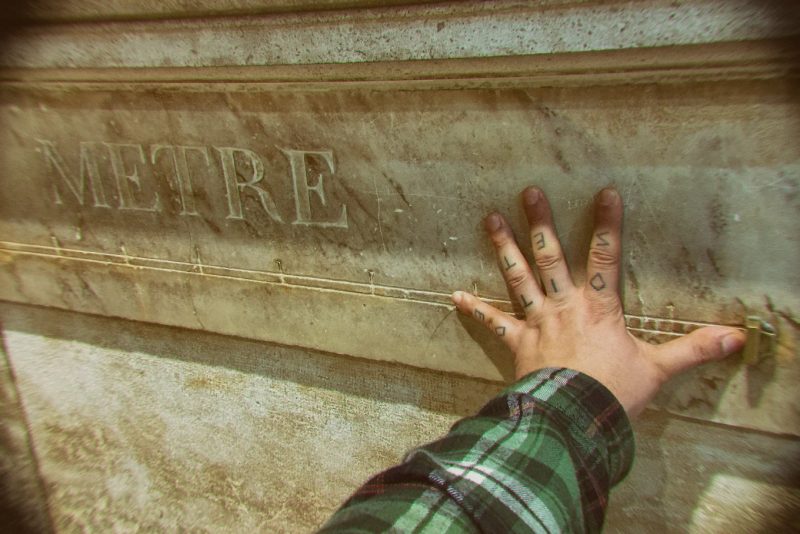
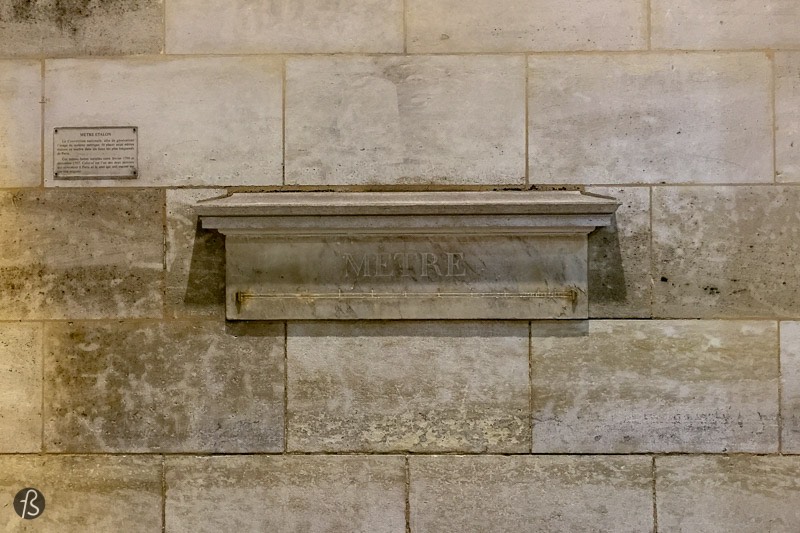
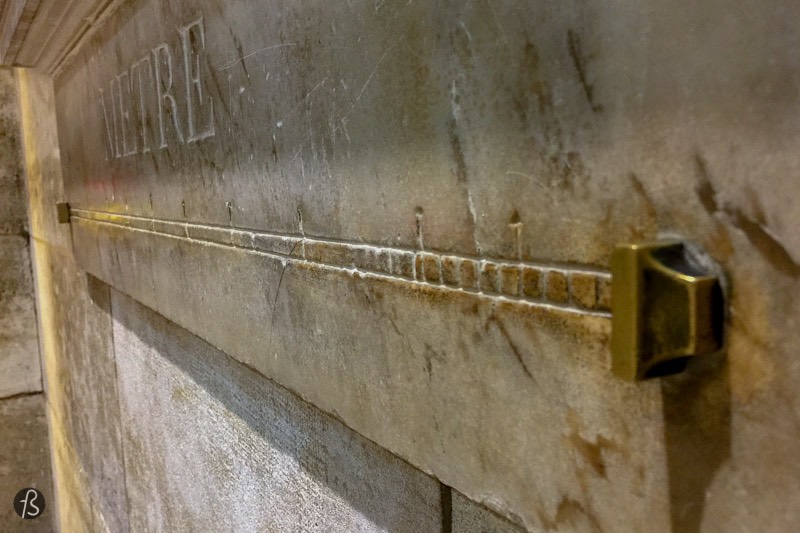
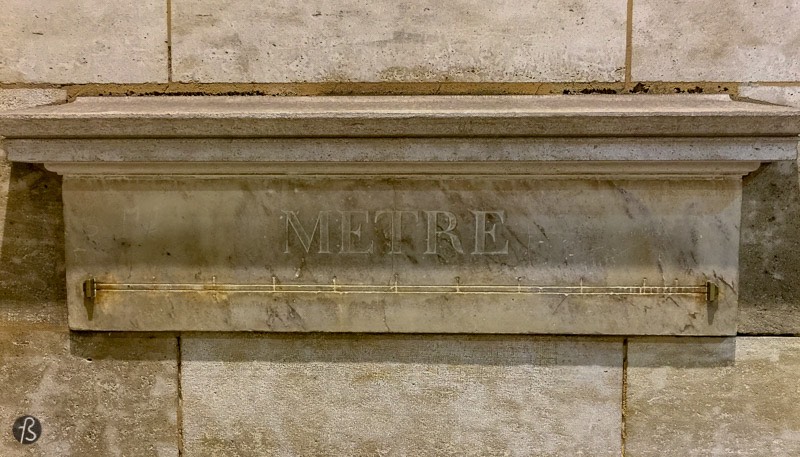
The Declaration of the Rights of Man and the Citizen is the most critical work of the French Revolution, but the unification of measurements changed the world.
Before 1789, each region of France had its own way of measuring length, area, and weight. Commerce between the regions was complex, and putting prices on goods wasn’t simple.
With this in mind, the French Revolution facilitated trade and created uniformity of measures and weights. After it became law, several years were necessary to spread the word about this new measuring method throughout France. With Napoleon’s conquest of Europe a few years later, the system was adopted by more countries.
In 1875, it was officially established as an international measurement unit by the Metre Convention of 1875. Today, you can see it pretty much anywhere.
As we said, the meter wasn’t arbitrary like the previous unpredictable ways of measuring distance. The scientific meter was defined by French astronomers Jean Baptiste Joseph Delambre and Pierre Méchain when they measured 10 millionths of the distance from the North Pole to the Equator through a Paris meridian.
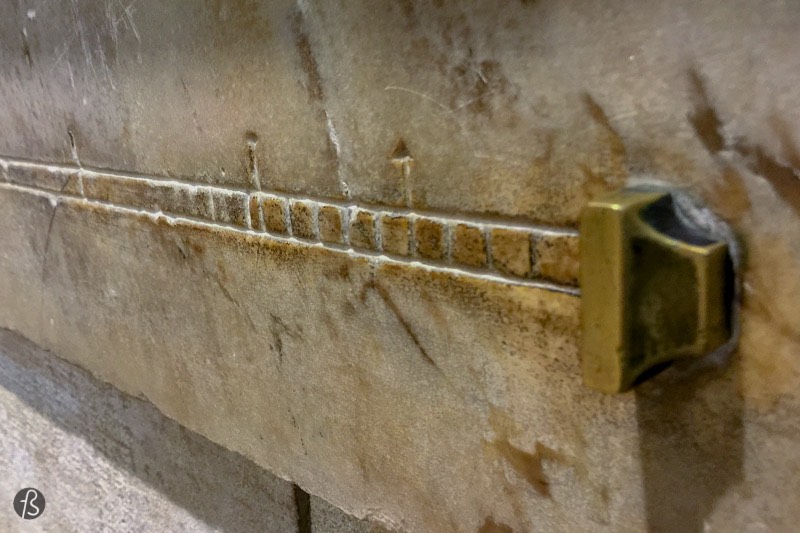

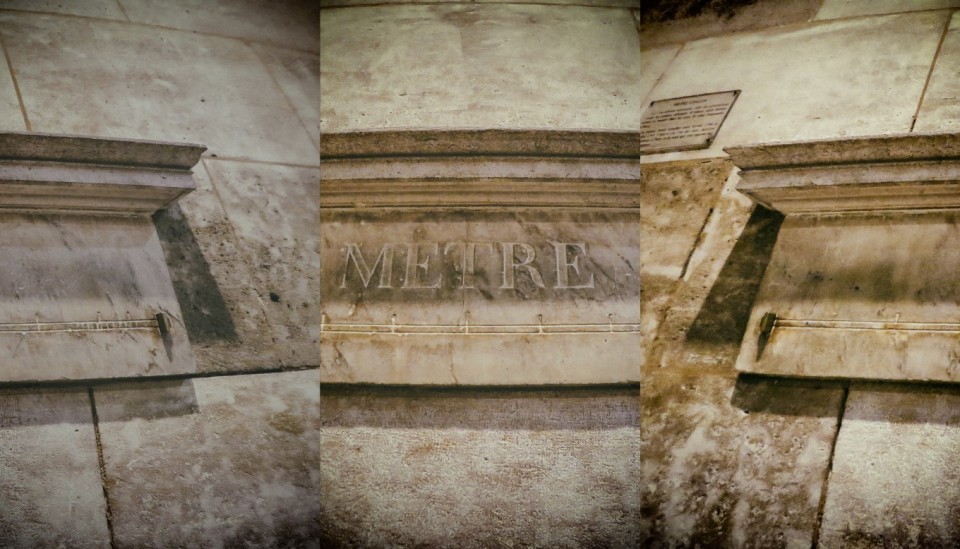
The last original standard meter is called mètre étalon in French and is a small piece of marble found on a wall next to rue Vaugirard 36, across the street from the Senate at the Palais du Luxembourg. This is the only one of 16 that still exists today, and all of them were installed in 1791 when the Académie des Sciences defined what would be the meter.
If you want to visit the last original standard meter, pay attention to where you are since it’s straightforward to miss. Follow the map below and look at the wall beside the bus stop.
You will face a piece of history that changed how we live today!

Mètre Étalon: The Last Original Standard Meter in Paris
36 Rue de Vaugirard, 75006
Paris, France